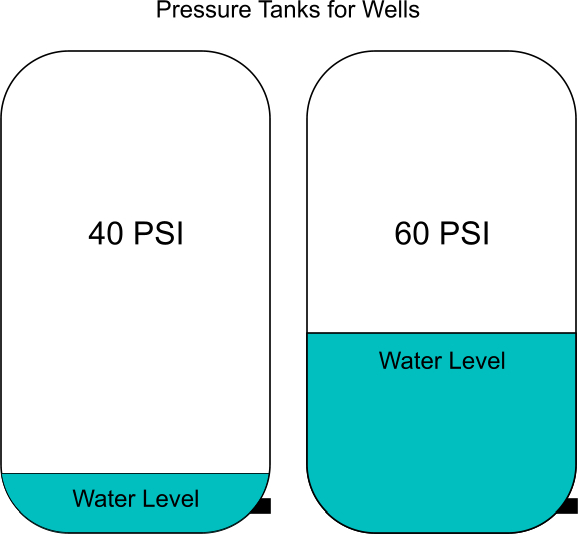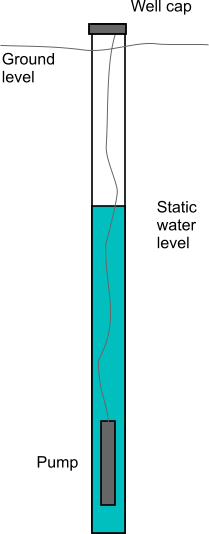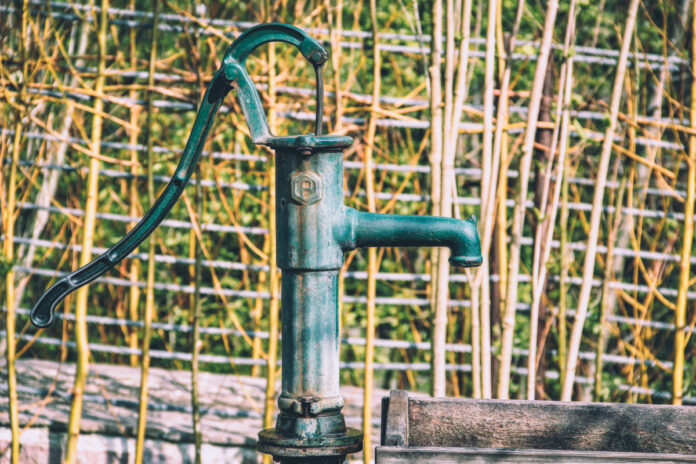The last two days we have been dealing with well-related problems, which means less time for all the reading and binge watching I was planning on doing. Ah hell, who am I kidding? We appreciated the interruption to our normally dull quarantine schedule, even if it meant buying a new pressure tank.
On something like 7,999 days out of 8,000, getting drinking water from a well is great. You get plenty of water and don’t have to pay any sewer or water fees. Once every 10 or 20 years, however, something wears out and you have to spend a chunk of change to replace parts. For us, that day was today.
The good news is that we didn’t have to touch the well pump, which is 300 feet down a hole. As you can imagine, pulling it out and replacing it is neither easy nor cheap.
We ended up replacing the pressure tank and the electronic pressure switch. They were from 1992 and 1998, respectively, so you can see how a good well doesn’t cost you anything for years, but then zaps you several hundred bucks every couple of decades. To me, it’s well worth it.
And this is just the excuse I needed to cover the subject of wells, well pumps and pressure tanks, because every prepper knows that water is important to survival.
The Pressure Tank
If you already know how a pressure tank works, you can skip this part. But if you have one of those blue tanks in your crawl space, basement, or well house — or think you might one day — then this knowledge might come in useful.
You might think that when you turn your faucet on or flush your toilet, the well pump turns on and pumps water right to where it is needed, but that’s not the case. The pressure tank serves as a holding reservoir and assures that you have water instantly available. Your pump fills the pressure tank with water, which is then held there under pressure so that when you turn your faucet, water instantly comes out.
Common pressure tank sizes are 20, 26, 32, and up to 44 gallons (the come smaller, but I don’t recommend anything less than 20 gallons), but they don’t hold that much water because much of the room inside the tank is taken up by a giant bladder. This rubber balloon holds air, and when the well pump pushes water into the tank, it compresses the air in the bladder, increasing the air pressure in the bladder. Since the air in the bladder wants to expand to relieve the pressure, it pushes back on the water. When you open a faucet, this pressure forces the water. Hence the term “pressure tank.”
The pressure switch monitors the pressure in the tank and tells the pump to send more water when it gets low and to shut off the pump when the pressure gets high. For example, your well might turn on at 35 PSI and off and 65 PSI, or it might turn on at 40 PSI and off at 60. It can vary based on your equipment.

Before it was repaired, we were having problems where the pressure would reach 80 or even 90 PSI. So when we took a shower, the water would shoot out for a minute, then slow down, then get stronger and then really blast out again. We knew that was unusual, so that’s why we had the system checked out.
Your Well and Pump
It’s a fact of science that pumping water up a pipe is much easier than sucking it up a pip. In fact, you cannot mount a well pump on the surface unless you have a shallow well, say 20 feet or less. Because most wells in the U.S. are much deeper, they use a submersible pump which is located down the narrow shaft that is your well. Most wells have a casing, which is a metal liner that down a good ways to keep dirt from falling into your well or small bugs, larva, or even mammals from burrowing into the shaft, falling in and drowning. That would obviously be bad for you water quality.
Our well casing is 6 inches in diameter, which is pretty standard, and the pump is around 300 feet down the hole. The static water level, however, is much higher than the pump. This head of water provides an available reservoir of water and helps ensure we don’t run out of water when the pump kicks on.

Dowsing for Water
I’ve only been involved with one well drilling, and the owner used a dowser to tell him where to site the well. Dowsers, sometimes called water witches, hold a forked stick, or in the case of this fellow, a bent coat hanger, and walk the land, sensing where the water below them is and recommend where to drill a well.
Now people will tell you that it is an unscientific method, and I cannot argue with that, but I can only tell you that it worked in this case. The fellow went to the land at sunrise one morning and marked the best spot to drill. He told us when we would strike water and when we would hit 7 gallons per minute. When the well driller sunk his hole, the numbers were off by less than 3 feet on striking water and 10 feet on the second. That’s good enough for me.
Sizing your well and tank to your house and its occupants is important because you don’t want to run out of water. The U.S. average water usage is 80 to 100 gallons per person per day, which includes cleaning, bathing, washing clothes, doing the dishes and meal prep.
Plumbers and well contractors generally count up how many devices in a home use water and size the well and your pressure tank to that. If you need 7 gallons per minute and your well produces 20, that’s not a problem. On the other hand, if you need 7 gallons per minute and your pump produces 4, that could be a problem and they should keep drilling.
If the well produces less water per minute than you need, you can install a cistern or reservoir to provide an immediate source of water, but we won’t get into details here.
Keep Your Pump Healthy
Once you’ve drilled the well, which I would always do before building the house, the most expensive component is the well pump, so it makes sense to take good care of your pump.
The most important way to preserve the life of your well pump is to not cycle it on and off too frequently and not to overheat it. The pressure tanks exist to keep the tank from cycling on and off every time you fill up a glass of water. The water moving through a pump also helps keep it cool, so you never want to run your pump dry. If your pump is running and no water is coming out, turn it off. If you’re not sure where the controls for your pump are, you can throw the circuit breaker in your panel box. And if you’re going to leave home for weeks, it’s probably a good idea to shut off the well, too.
I once lived at a house with three kid and the well had problems keeping up. We learned not to fill the kiddie pool and run laundry on the same day. We also could not water plants if there was a drought.
Other entries in our Quarantine Diary are available in chronological order.








